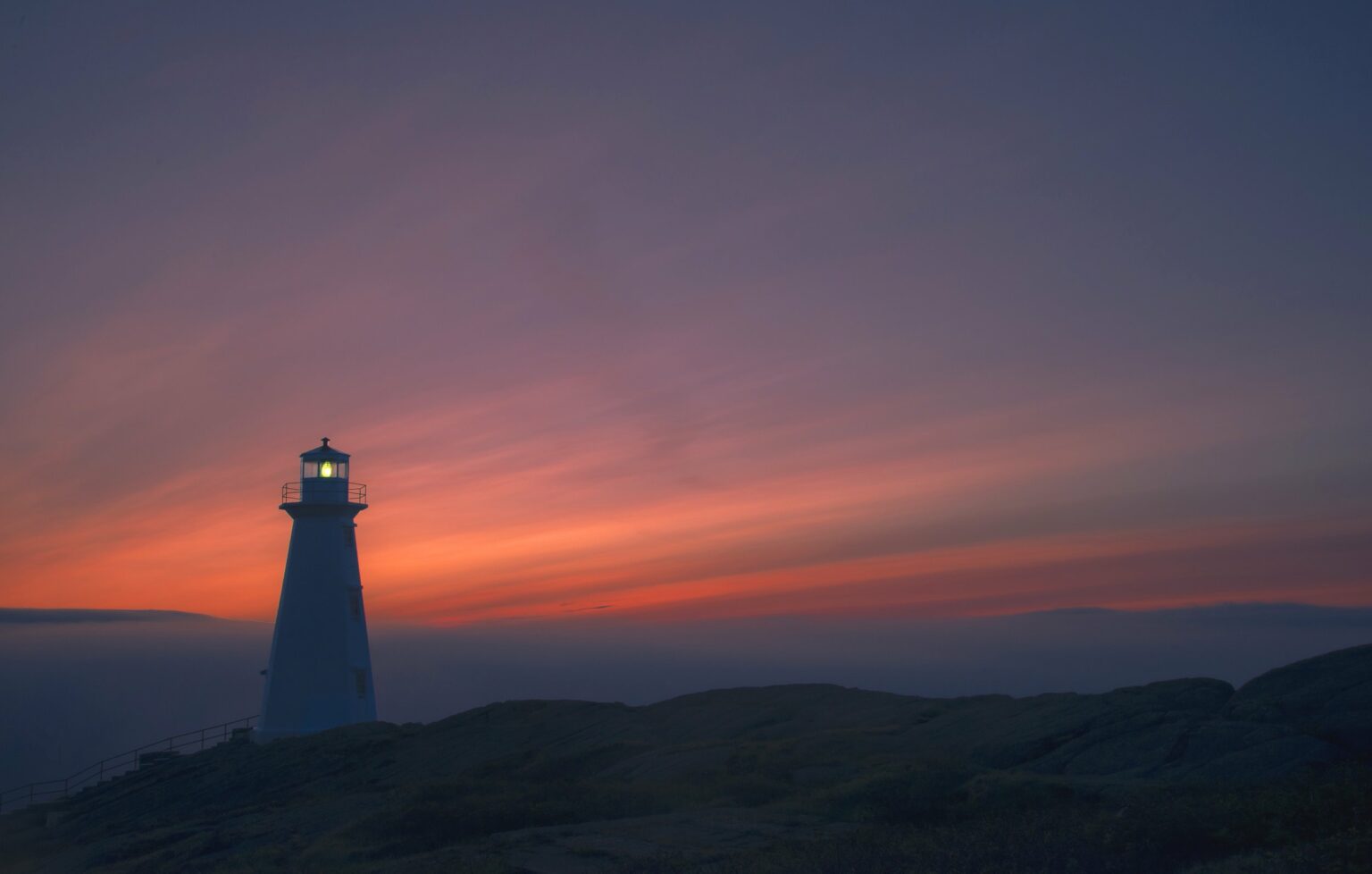
Why photographers love Newfoundland
By Kevin Pepper |
People always ask me what keeps taking me back to Newfoundland. Here are a few reasons that I think Newfoundland is so special.
The Seabird Colonies
The abundance of seabirds in Newfoundland commands a dedicated trip for bird photographers.
The Northern Gannet colony at Cape St. Marys is one of the best and most accessible places in the world to see nesting seabirds. It is home to 30,000 northern gannets, 20,000 black-legged kittiwakes, 20,000 common murres, and 2,000 thick-billed murres during the breeding season. In addition, it is home to more than 100 pairs of razorbills and more than 60 pairs of black guillemot. Double-crested and great cormorants and Northern fulmar also nest there.

What makes this so spectacular, however, is that all these birds can be seen from land, as close as 10 meters away. For example, most northern gannets make their nests on “Bird Rock,” a 100-meter-tall stack of sandstone separated from the viewing area by a chasm only a few meters wide. The gannets’ courtship, nesting and feeding behaviors, interactions, and delicate flying maneuvers over the crowded sea stack are endlessly fascinating and easily observed from the natural cliff-top viewing area, even on foggy days.
There are also two large puffin colonies in Newfoundland. Boasting over 300,000 Atlantic Puffins, the east coast of Newfoundland is arguably one of the best places in the world to photograph Puffins. Whether you want to photograph them in flight, observe nesting behaviors, or watch them walking along the cliffs at your feet, there is never a shortage of photographic opportunities for the bird photographer at one of the puffin colonies in Newfoundland.

Marine Life
Whales, orcas, dolphins, and jumping tuna are always a highlight of our tours in Newfoundland. Newfoundland’s whale population from June to September makes this an ideal location to follow these behemoths as they eat and frolic along the shores. We photograph them both by land and by chartered boats.

Other wildlife in Newfoundland
As a bonus on our wildlife tours, there is always a chance to see moose, black bears, caribou, and a variety of red foxes along our journeys in Newfoundland.

Landscape Photographers
For landscape photographers, we have a second tour focusing on Lighthouses, seascapes, and icebergs. There are also some opportunities to spot wildlife on this trip.
Lighthouses and Seascapes
With over 29,000 kilometers of twisting coastline laden with submerged rocks, hidden inlets, and monolithic icebergs, it’s little wonder that Newfoundland and Labrador has several hundred navigational lights clinging to its craggy shores. For centuries, explorers navigated our coastline without using the help of GPS, the Coast Guard, motors, or even electricity. They counted on the lighthouses and their keepers for guidance in the thickest fog and darkest night.

Despite their candy cane appearance at times, the image of these vigilant, solitary guardians is a romantic one. Perhaps it’s the sense of mystery they evoke or the connection to shipwrecks and long voyages over water. Maybe it’s simply the incredible view. But whatever the reason, people are drawn to these structures almost magnetically. And nowhere is this feeling better captured than in Newfoundland and Labrador, where the beauty and peril of its dramatic coastline exist side by side.
Fortunately for those who follow the light, this place has plenty. There are so many lighthouses in Newfoundland and Labrador it’s impossible to list them all, but we know the most photogenic ones to take you to.
Icebergs
Iceberg Alley stretches from the coast of Labrador to the southeast coast of the island of Newfoundland. From north to south, here are some of the more popular places to spot icebergs from shore or tour boats: St. Lewis, Battle Harbour, Red Bay, Point Amour, St. Anthony, La Scie, Twillingate, Fogo Island, Change Islands, Bonavista, St. John’s / Cape Spear, and Bay Bulls / Witless Bay. All of these locations are accessible by road. The first four are on the coast of southern Labrador and can be accessed by car ferry from the island of Newfoundland year-round—the further north, the longer the iceberg season.

Newfoundland is one of the few places in the world to receive simultaneous visits from whales, seabirds, and icebergs. As the whales and birds migrate north and the icebergs sail south, one can experience these beautiful sights in one trip. Like so much in nature, many factors vary from year to year, but with luck, you’ll witness this exciting spectacle.
We’d love for you to join us on one of our Newfoundland trips!


